Leaderboard
Popular Content
Showing content with the highest reputation on 01/14/2017 in all areas
-
Well,basically I bought it because I had just sold something else and had some "free range money" in my pocket,it was all show-polished and purty,and I wanted it. I also have a couple of 23 inch Mopar blocks it will bolt onto. Plus at that time I didn't have any multi-carb intakes for my 23 inch Mopar engines. I pretty much knew it was more for looks that actual performance in a daily driver,but at this stage in my life I am more interested in re-creating 50's style hot rods than I am maximum performance,be it top in horsepower or gas mileage. It's just something that would make me smile and make me happy everytime I raised the hood. I was kinda/sorta thinking I might run it temporarily,but when I got bored I would start doing stuff like making spacers to raise the carbs,and even making raised adaptors to bolt 1 brl carbs to it to see what would happen. I now have other intakes for the 23 inch engines,and may just end up putting it up for sale on ebay or craigs list or try to trade it for something. Don't really care one way or the other. It's paid for and it doesn't eat anything,so it can just sit on the shelf so I can smile at it will walking past and that's ok with me. I never allow myself to get stressed over spent money. I can do all the stressing I need to do over money I have to spend next month to worry about what I spent last month. The truth is none of this stuff belongs to me,anyhow. I'm just babysitting it until someone else buys it to babysit at my estate sale3 points
-
I have really enjoyed reading this thread through. There's been an excellent discussion on modifications tried and results obtained as well driving habits being mentioned. Sometimes things get a little off subject and I was sorry to read that someone was offended by this and they announced, "At the risk of starting a bush fire..." - It didn't. As a reader, I simply discard that which doesn't interest me. Actually, the only thing I saw that may be considered inflammatory was that some was told to .."get a life ..." . It was acknowledged by the person addressed and shrugged off...2 points
-
Mine is still at the panel shop. They were checking the door gaps yesterday before reassembling the rear section. We call them a 'coupe' truck. There is nothing behind the rear seat - the load area just extends into the undercovered area. A selling point on the trucks back in the day was the huge 17 inch parcel tray behind the driver. I will update my build thread (on the truck forum) in the next few weeks as I suspect that there will be a fair bit of progress made. see link attached...2 points
-
Today marked a big day for my family, as today was the day that we relocated my 1953 Dodge (Australian) coupe truck to our other shed for a complete body-off restoration. I plan to document that restoration for all here to view, learn, and offer assistance as the need arises. The project is planned as an original restoration which will take place over the next couple of years with similar attention to detail as my previous restoration project (my 52 blue Desoto truck). I picked this truck up with my late Dad back in March 2009 from a town called Tara, which is located around just under 4 hours west of my place - I live on the east coast of Australia (near the capital city of Brisbane, Queensland). I had planned on starting this restoration project a couple of years back but life seemed to keep getting in my way and the project was put on hold until now. I do not know much on the history of this truck apart from the fact that it was owned by the family of the previous owner for many years and was mostly used as a wild boar and kangaroo hunting/shooting vehicle. The truck had racks fitted, which stretched from the front to the back of the vehicle, in order to carry those culled animals (which I was told were generally destined for export to Germany). The overall condition of the vehicle was good, apart from a lot of surface rust and the stench of rats! I had initially thought of an appropriate name for this truck a few years back, but have most recently decided to name this truck 'Pop' after my dear old Dad who passed away tragically last week after a very short battle with cancer. Please enjoy this topic and feel free to offer comment, words of encouragement, or advice at anytime.1 point
-
I hated to hijack the thread about dual carbs, so decided to start a new one about fuel economy and how it can be improved. It has been stated by Sharps40 that 30 mpg at 60 mph highway driving is impossible. I have to agree. It is impossible to argue against extensive experience. At the time when there were no EPA mileage ratings, Chrysler advertised that some drivers managed to make 20 mpg in their cars. Realistically, this means an average driver should have been content with 15 mpg. But did anyone try modifications aiming at economy? I searched extensively, but could not find anything. All the mods I could find were about increasing power. We can look at how fuel economy of today's cars has been achieved, and whether some steps in those directions can be taken in our cars. 1. Increase compression. 8.5 - 9 is possible in Mopar engines with 78 gasoline. 2. Decrease engine displacement. This improves economy at the expense of performance. The most fuel-efficient non-hybrid car in the USA, Geo Metro, which is capable of 50 mpg highway, has 1 liter 3 cylinder engine. I own 3 of these cars. They are excellent everyday drivers. If my Plymouth had the same dynamics as Metro, I would be very happy. To compensate for the loss of performance of small engines, their rated power is increased by high rpm, 4 valves per cylinder, and variable valve timing. These power tricks come at drastic loss of economy. There is nothing to be gained here for flat six engines, except understanding that 190 and 201 engines are more economical than 230 ones. 3. Manual transmission. Auto transmission is big waste of engine power. Typically, auto car is 20-25% less fuel efficient than stick shift of the same model. However, manual transmissions are not all the same. The most economical are those that have direct drive, like third gear in a 3-speed Mopar transmission. In third gear, friction losses in such transmission are minimal. Unfortunately, with standard rear end and standard wheels, 60 mph in third gear is not where engine works economically. The simplest solution is overdrive, but friction losses in overdrive should be considered. Higher gearing can be also achieved using 3.9 rear end (which I have in my car) and 235/85R16 rear wheels. This combination gives 15% higher final ratio (for comparison, overdrive gives 30%). Taller gearing should be acceptable if engine power is increased. 4. Leaner burn at sustained highway speed. Flat six engines are intrinsically amenable to leaner burn because they have much more turbulence in combustion chambers than OHV engines. Leaner burn requires stronger spark than pathetic 6V ignition can deliver. This is not a problem. Modern transistorized or capacitor discharge ignition should take care of it. Of course, proper jetting will be necessary, guided by output from an oxygen sensor. 5. Better carburettor. Newer carburettors provide more precise fuel metering than primitive OEM carburettors of 30s - 50s. Substantial savings can also be achieved by fuel cutoff during engine braking, which newer carburettors allow. 6. EGR. Reduces fuel consumption at sustained highway speed. This is an easy add-on. 7. Tuned intake and exhaust. Most modern cars have intake and exhaust resonators that reduce engine pumping losses at engine speeds of steady highway driving. 8. Electric radiator fan. Belt-driven radiator fan without clutch easily robs engine of 2-3 hp at highway speeds. 9. Thinner engine and transmission oil. With tight tolerances in Mopar engines, 0W20 synthetic oil should be OK. Pennzoil Synchromesh is an excellent transmission fluid that is much thinner than regular gear oil. Not much savings here, but everything adds up. 10. Radial tires. These have 20-30% less rolling resistance than OEM bias ply tires. Of course, steering would be more difficult, but I don't think this is insurmountable. Our Nissan truck has no power steering, but my petite 115 lb wife drives it without complaints. 11. Good driving habits. Maintain steady speed, minimize hard braking and acceleration, use pulse-glide where appropriate. There are devices that show instant mileage - they are very helpful in learning how to drive for economy. Unfortunately, they only work with fuel injection. A manifold vacuum gauge on dashboard is acceptable substitute. Economy driving is safe driving. Critiques? Other suggestions?1 point
-
No their a failed flawed design. No one with a maxed out race engine ran that intake and Edmunds dropped the design quickly. All of his later model designs were higher up in the air to regain torque and dual barrel concept dropped. Sorry, as perhaps you were hoping this to be some sort of rare performance piece. It is not. You can get better throttle response and more cfm from the carter ball and ball configurations.1 point
-
I'm a little late to this party but remember that my father's original '52 Plymouth consistently did 17 mpg in the city (Brooklyn...lots of stop and go) and 23 mpg on the highway. He was a NYC cab driver for many years and was adept at making good shifts. He also maintained the tire pressure at 32 PSI year round, which may have helped.1 point
-
Item number 11 from the original poster. It has been my experience having driven many years with many different vehicles that "good driving habits" has as much if not more to do with better gas mileage than many mechanical alterations no matter what manufactures equipment is used. Therefore the information about driving habits I posted about my 1997 F-150 is relevant to this thread. My wife has heavy feet on both the brake and accelerator pedals. Her car has an instant readout on miles per gallon. When I drive her car I can increase the MPG readout by 20 to 30%. More proof that good driving habits can have a big effect on economy.1 point
-
Nice looking Bus. Coupe Steve, good to see another over here. Ask Robin if you can borrow his door locks, they're no use on a vert!!!! regards......... Simon.1 point
-
Not still under warranty? Pretty hard to buy anything these days with less than 5 year warranty on powertrain. Lots of makers have a longer warranty than that. If off warranty, I would certainly get a second and even third opinion.1 point
-
a little skidder bridge panel hauling this morning. the panels are made of six 8"x8"x16' hardwood cants, and weigh about 1600 lbs per panel. there are three in the load. took it fine, dump body made it easy to unload them. needed 1st gear low range to get to the landing.1 point
-
Knuckleharley you are right about how driving conditions affect the outcome. I brought up this tuning technique though to highlight how one might be able to really achieve optimum ....whatever that happens to be. If one were to do this type of tuning at least you would know for certain when you were at optimum for the equipment you have to work with. You could only take it so far with a device like the Carter B & B but if you had something like a Weber then you might be very surprised by the difference a few jetting adjustments makes. Of course there are many parts to the puzzle but it would be fun to see what could be gained. I went through this many years ago with another car I had and just by swapping to Webers I managed to go from 25 mpg to 43 mpg with a heck of a lot more grunt. So it is doable......and potentially a win-win. None of us win any prizes for dumping raw gas out the tailpipe. Jeff1 point
-
Yeah,but even that is more for theoretical purposes than practical use. Probably the biggest factor beyond our control is where and how we have to drive. If you live in a busy city and drive on busy streets with lots of traffic and red lights,the set up that gives maximum fuel economy is irrelevant because that is always listed for highway mileage. If you live in hilly country instead of flat country,that's another huge factor where steady RPM's at cruising speeds are irrelevant. Given the output of our flat 6's and how hard they have to work to just get up steep grades,that's probably be biggest MPG killer of all. BUT......various people here talking about operating different engine,tire,weight,and geared vehicles over various types of roads and conditions gives us all insights into what will GENERALLY work best for all of us. If you expect to get maximum economy under all conditions,your only hope is to buy a new car with computer controlled everything. We,and the cars and trucks we drive operate in a time in space where you are only in a perfect state of tune at idle or wide-open throttle. Which means there is more to fuel economy and drive-ability to us than just a torque curve. We have to make compromises so our vehicles are at least semi-efficient to all our needs. Guys who just take their cars out on weekend highway runs can pretty much dial them in for the majority of the cars use,and so can guys that live in cities and mostly drive to drive-ins or parks for casual shows or meets. The later don't really care about maximum MPG at 60 MPH,but they do care about torque at take off. People that live in snowy mountain country or cities in the frozen north will be more concerned about fluid drives,torque converters,and outright automatic transmissions than they will overdrive transmissions. How boring would this and every other board be if we had a focus so narrow there was always one set of answers to any questions asked? Hell,we might as wlll all buy new 4 cylinder Altimas and be done with it. Providing of course we could all agree on the paint and interior colors.1 point
-
Prior to retirement I had a 60 mile daily commute. 1997 F-150 24 gallon tank. If I set the cruise at 70 MPH I would burn a tank every 4 days. If I set the cruise at 55 MPH and stayed in the truck lane I could get 6 days on a tank of gas. Driving time with normal traffic was about 5 minutes longer at 55 MPH and a lot less stressful.1 point
-
" But did anyone try modifications aiming at economy? I searched extensively, but could not find anything. All the mods I could find were about increasing power. " Of course. Look up "Mobile Economy Runs". Look for little tricks those cars used to maximize economy that you would never live with in a daily driver,like skinny 6 or 8 ply tires pumped up to 50+ psi of air pressure,though. Yeah,it works,but no way is any normal person going to be willing to deal with that harsh ride to save a few pennies per tank of gas. Winning the Mobile Economy Run used to be a big advertising deal,though. Lots of bragging rights attached to it. I may be wrong,but it seems to me like it was either Studebaker or Rambler that won in the 50's. It is also untrue that modifications to increase performance decrease fuel economy. Up to varying points depending on engine design and modifications,when you make an engine more efficient you not only get more gas mileage,but you also get more power. Obviously a Hemi from one of Gartlitz's old Swamp Rat dragsters makes plenty of power and gets next to zero MPG on nitro methane,but there is a sweet spot between a AA blown fueler and a car modified to be more efficient for daily driving. Don't forget,factory engines prior to today's modern computer controlled engines were designed for the most part to run smoothly and quietly at low RPM's,not for power of gas economy. You can add a more efficient highway or city cam,depending on where you do most of your driving,along with a hotter spark,more compression,and especially on inline 6's,3 single barrel carbs,dual exhausts of the proper ID with a balance tube,and get a big boost in both power and economy.1 point
-
... I spend any of my spare time tackling smaller chores. Most of the parts which I put back on the truck are zinc plated. I had the seat slide brackets plated and then put them back together ready for install. I had a number of nuts, bolts and washers plated at the same time. I find that zinc plating is relatively cheap, and a good way to minimize future rust! I also zinc plated a heap of the small metal tabs while hold various items like electrical wiring, fuel and brake lines. I then used a small heat blower to shrink plastic onto those metal tabs...1 point
-
1 point
-
... the work seemed to be moving along well, but was held up at times due to other rush jobs in the shop (and my supply of funds!). It was comforting to finally see things start to go back together! The load area panel between the seat and the bed was removed and beat back into shape. It is common to see them bent inward here in Oz due items rolling around in the load area and (I assume) smashing into that panel when the brakes were applied! My panel was not too bad, but it was certainly easier to remove it for re-working. The old rusty bed channels and flat metal bed floor panels were all made new and replaced. The channels here had a timber beam inserted in their center, which the timber floor boards would screw into. The only problem with that was that water would sit around those timber beams and cause the metal channels to rust out. I had new metal channels made up out of thicker gauge material and will spot-weld a top flat plate over the top of those channels for additional strength (and somewhere to screw the timber floorboards to). A small length of galvanized pipe will be inserted into the channel (before the top plate is affixed) to prevent the top plate for compressing when the body to chassis bolts are inserted to hold the body to the chassis...1 point
-
Wow, it has been just over a year since my last build update, so I suppose that time is well overdue to bring those who are interested up to speed. I apologize in advance as it may be a lengthy story... The panel beating on my 53 Dodge coupe truck is still an ongoing project, which is thankfully nearing completion! It has been a long and certainly costly project! I have no doubt that there are those who would consider my attention to detail way over the top, but this is my truck so I guess I can do with it as I please. I decided early in the piece that we would undertake the panel work on this truck in the same process as we did for my 52 truck. It just makes more sense to me to rip everything down to the bare minimum in order to restore the panels to a standard of my liking. I suppose that we are a little unfortunate in a way that many of our smaller trucks here in Oz were produced in what you on the other side of the pond would call a 'uni-body' configuration as this created a fair amount of additional work when is comes to panel restoration. The guys carefully unpicked all of the spot welds required in order to reduce my coupe truck body to a skeleton, and then those panels removed were split inside from out so that they were able to be repaired from both sides. Most of those panels have small 'saddle-type' metal tabs spot welded to them in order to hold the 'captive nuts' to secure things (such as the rear guard wheel flares and the top bed rails) and there were quite a few of those fittings which I damaged when removing rusty bolts during disassembly. I was able to recycle some replacement fittings which I carefully obtained from one of my parts trucks - I bought new square nuts for those fittings as well, but I had to tap them to the correct thread before fitting. I wanted to make sure that all of these fittings were perfect while I had access to them as there are not accessible once the panels are welded back together...1 point
-
I couldn't find my spring or the little bracket and possibly my car didn't have one when I got it. I found this one in a junkyard. Like Don said you may want to look up the adjustment procedure. I couldn't figure it out til I read about it, never dealt with an over the center spring. I found it searching old threads in the forums.1 point
-
1 point
-
Your shop manual has explicit instructions on how to adjust clutch free play. If you don't have a manual get one. The spring you have pictured is way too heavy and looks more like the over center spring.1 point


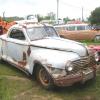

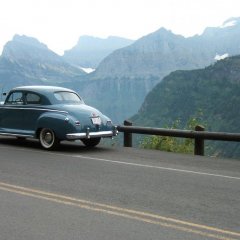



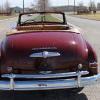
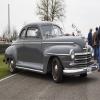
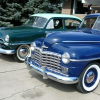
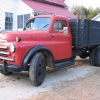
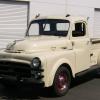




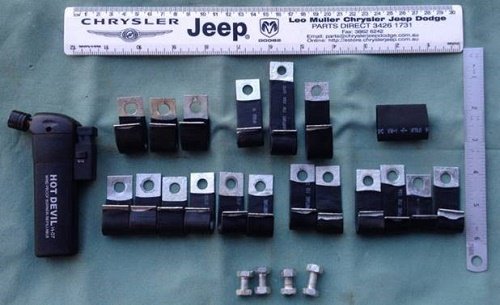

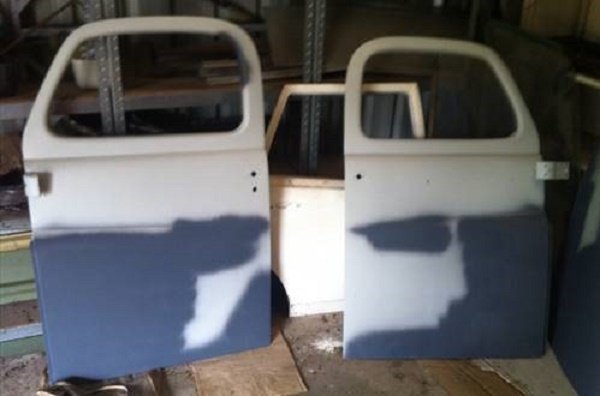
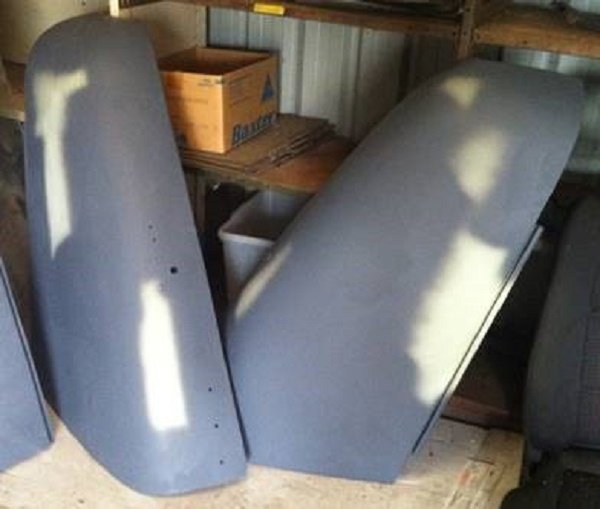



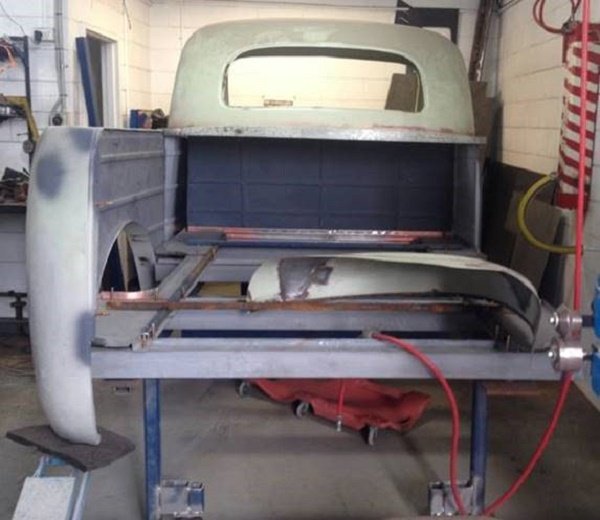
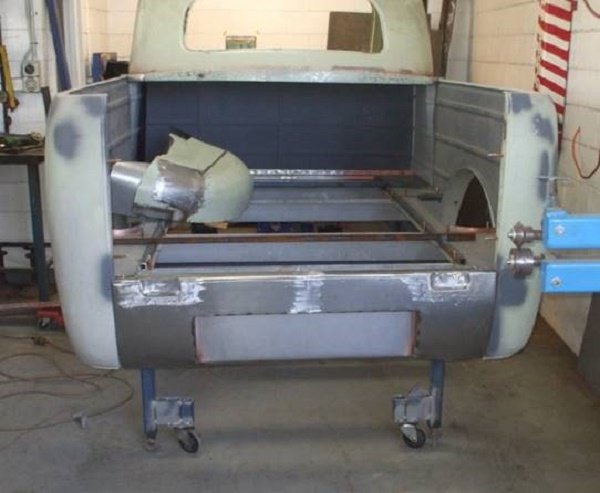

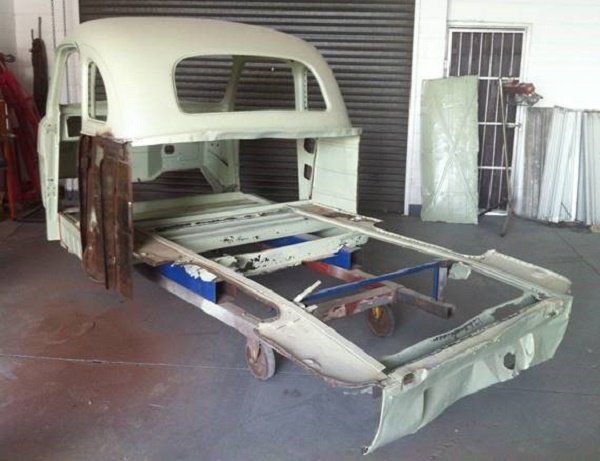





.jpg.7f4c4f1e292b1e4442c555e5059128a9.jpg)